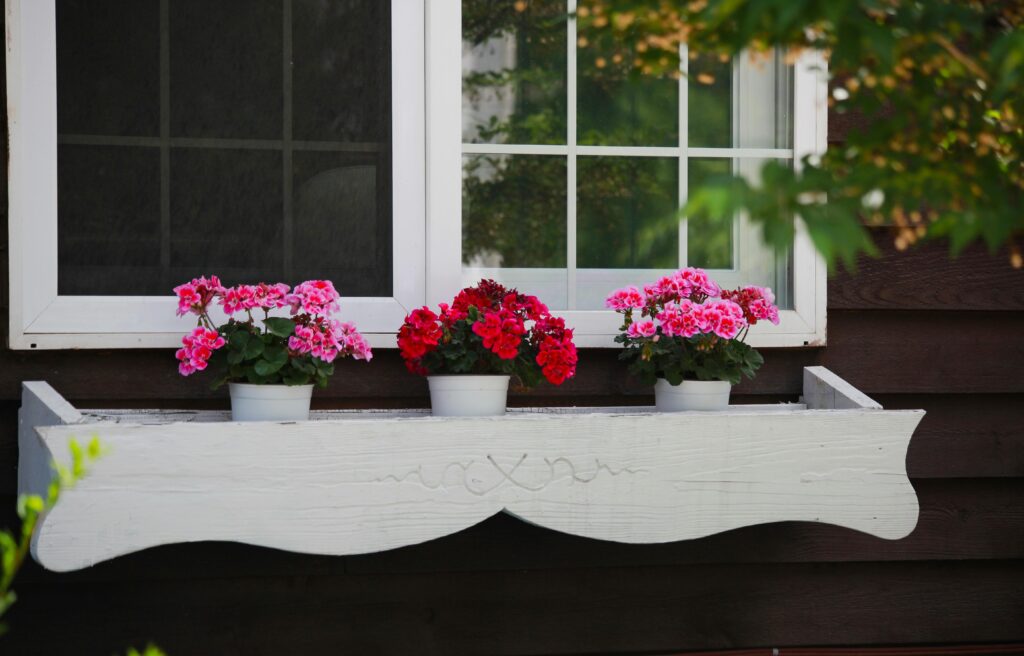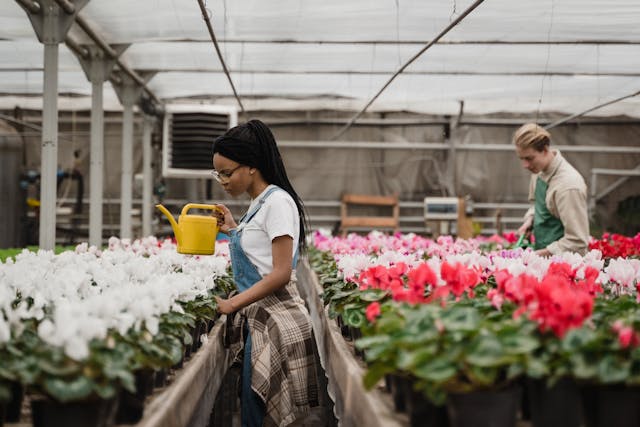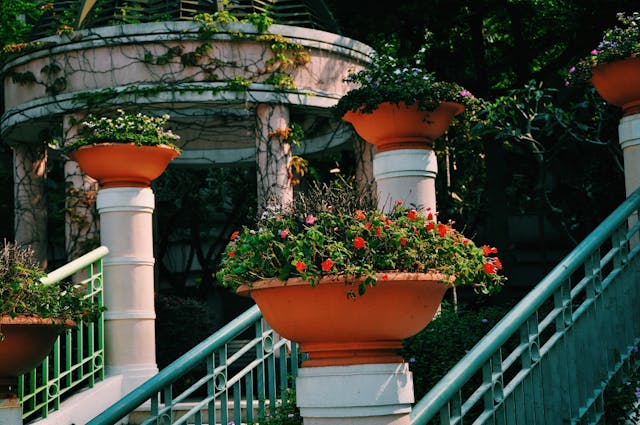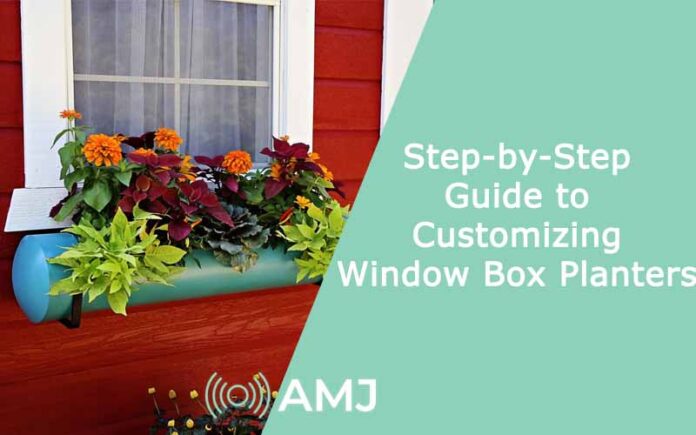
(Source: Pexels)
Hey there, green thumbs and budding gardeners! Are you ready to transform your windows into vibrant displays of flora? Window box planters are your ticket to adding color and life to any space, regardless of size. These nifty little containers offer a fantastic way to beautify your home’s exterior, enhance privacy, and even grow herbs or flowers outside your window.
Let’s dive into why window boxes are a game changer in garden design and how you can customize them to thrive through the seasons. Stick with me, and I’ll walk you through crafting your dream garden with window box planters!
Contents
Planning Your Window Box Garden
First things first, let’s talk about location and logistics. Before dreaming about beautiful blooms, you need to assess your space. Not all windows are created equal! Check out how much sunlight each window gets throughout the day—this is crucial for choosing plants that will thrive in your window box.
Have you got a shady spot? No worries, there are plenty of gorgeous shade-loving plants. Bathed in sun? Go for sun-hungry beauties. Now, grab your tape measure because size does matter here. The length and depth of your window box should complement your window and provide enough room for your plants to grow.
Choosing the right spot is about more than just where the sun hits. Consider the view from the inside, too. Imagine sipping your morning coffee with a personal view of blooming geraniums or fresh basil at arm’s reach. Once you’ve got the location down, you’re well on your way to creating a window box garden that looks fantastic and perfectly poised to flourish.
Selecting Materials and Styles
When picking the right window box, the material matters as much as the look. Let’s break down your options:
- Wood: Classic and rustic wooden window boxes bring a natural touch. Just remember, they can require more upkeep to prevent rot and weather damage.
- Metal: Want something sleek and sturdy? Metal might be your match. It’s durable and often comes in modern designs. Keep in mind that it can heat up, affecting root temperatures.
- Plastic: If you’re after something lightweight and budget-friendly, plastic is the way to go. Plus, it comes in loads of colors and designs. However, it might not have the same longevity as other materials.
For those looking to fully personalize their gardening experience, consider customizable window box planters that allow you to design your own setup to match your style and meet specific needs.
Think about the style of your home. A charming cottage? Wood could be wonderfully whimsical. Ultra-modern? Metal might just mesh perfectly. Choosing the right material and style ensures your window boxes look integrated and intentional, enhancing your home’s overall charm.
Choosing Plants for Your Window Boxes

(Source: Pexels)
Picking the right plants for your window boxes can be a delightful puzzle. Here’s how to piece it together:
- Seasonal Considerations: Opt for pansies in the cooler months, switch to petunias as the sun strengthens, or try evergreens for year-round greenery. Each season offers a chance to refresh your window display.
- Visual Appeal and Health: Mix it with height, color, and texture. Tall, spiky foliage like grasses can add height while trailing plants like ivy spill over edges beautifully. Plants that enjoy similar light and water conditions will thrive together.
- Flowering Plants and Foliage: Flowers bring the dazzle, while foliage serves as a lush backdrop. Marigolds burst with bright oranges, perfect for a sunny spot. Shade lovers? Ferns can be your go-to for green elegance.
- Edibles: Yes, your window box can be your mini edible garden! Aromatic herbs like basil and thyme thrive in confined spaces. Cherry tomatoes or strawberries can add a sweet touch, literally.
Remember, the key is to create a balanced box with various plants that look good together and grow well in your specific conditions.
Soil and Fertilization
Getting the dirt right is key to your plants’ success. A lightweight, well-draining soil mix keeps your plants happy and healthy. Consider mixing potting soil with perlite or vermiculite to ensure it doesn’t get too soggy. When feeding your green pals, you have two main choices: organic or inorganic fertilizers. Organic fertilizers release nutrients slowly and improve soil health over time, making them a great sustainable choice. Inorganic fertilizers, on the other hand, provide quick nutrient boosts. Regularly check your soil’s moisture, and feel free to add compost to keep it nutrient-rich. Remember, healthy soil means healthy plants, so do good groundwork!
Planting Techniques
Ready to get your hands dirty? Here’s how to plant your window box like a pro:
- Layer Your Base: Start with a layer of gravel or broken pot pieces at the bottom for good drainage.
- Add Soil: Pour in your prepared soil mix, leaving enough room for the roots of your plants.
- Arrange Your Plants: Think about how they’ll look from all angles. Taller plants in the back, medium in the middle, and shorter or trailing in the front.
- Plant with Care: Gently remove plants from their containers, tease out the roots slightly, and nestle them into the soil, firming gently around the base.
Post-planting, water your new arrangement thoroughly. Keep the soil moist but not waterlogged, and remove any yellow leaves or flowers to keep your plants looking fresh.
Seasonal Care and Rotation

(source: Pexels)
To keep your window box in tip-top shape all year round, adjust your care with the seasons. In the spring and summer, water more frequently and deadhead flowers to encourage new growth. As autumn approaches, consider adding plants that offer fall colors.
Winterizing is crucial if you’re in a cooler climate. Add mulch to insulate the roots, or swap out sensitive plants with hardy varieties. Rotating plants not only keeps your display vibrant but also allows you to experiment with different plant combinations and aesthetics. By keeping things fresh and seasonally appropriate, you ensure your window box garden continues to dazzle and thrive, no matter the time of year.
DIY Window Box Projects
Feeling handy? Building your window box is a rewarding project that lets you tailor every detail to fit your style. Here’s what you’ll need to get started:
- Tools and Materials: Basic tools like a saw, drill, screws, and waterproof wood glue are essentials. Choose materials based on your style and durability needs—cedar or redwood are great for longevity and resistance to rot.
- Simple DIY Designs: For beginners, a basic rectangular box is a great start. Measure your window, cut your wood to size, assemble the sides, and ensure proper drainage by drilling holes in the bottom.
- Advanced Customizations: If you’re more experienced, consider adding drip irrigation systems or incorporating intricate designs, like lattice patterns, for climbing plants.
Once your box is built, treat the wood to protect it from weather, and it’s ready to hang. This project enhances your home’s exterior and gives you a custom gardening space made just for you.
Maintenance and Troubleshooting
Keeping your window box flourishing requires a bit of know-how, especially when things go awry. Here are some tips for smooth sailing:
- Common Problems: Overwatering is a frequent issue. Ensure your box has adequate drainage, and adjust your watering schedule based on weather conditions. If plants are underperforming, consider whether they get too much or too little sunlight.
- Pest and Disease Management: Watch for signs of pests and diseases. Neem oil is a great organic option to tackle most small pest issues. For fungal diseases, removing affected parts and improving air circulation can help.
- Long-Term Maintenance: Regularly check your window box for signs of wear and tear, especially if it’s wooden. Reapply a protective finish annually to prevent weather damage. Refresh the soil each spring to keep your plants healthy, and swap out or trim back overgrown plants to maintain aesthetics and health.
By staying on top of these aspects, you ensure your window box remains a beautiful and thriving part of your home’s garden space year after year.
Conclusion
And there you have it—a complete guide to creating and maintaining your dream window box garden! From choosing the right materials and plants to DIY building and troubleshooting common issues, you’re all set to start this rewarding project. Remember, gardening is as much about the journey as the destination, so don’t be afraid to experiment and personalize your space. For more tips and tricks, check out additional gardening blogs and online forums. Happy gardening, and enjoy watching your window box bloom!












![Index of Money Heist [Season 1, 2, 3 & 4 – All Episodes, Cast and Plot] Index of Money Heist](https://www.asiamediajournal.com/wp-content/uploads/2021/05/Index-of-Money-Heist-3-100x70.jpg)